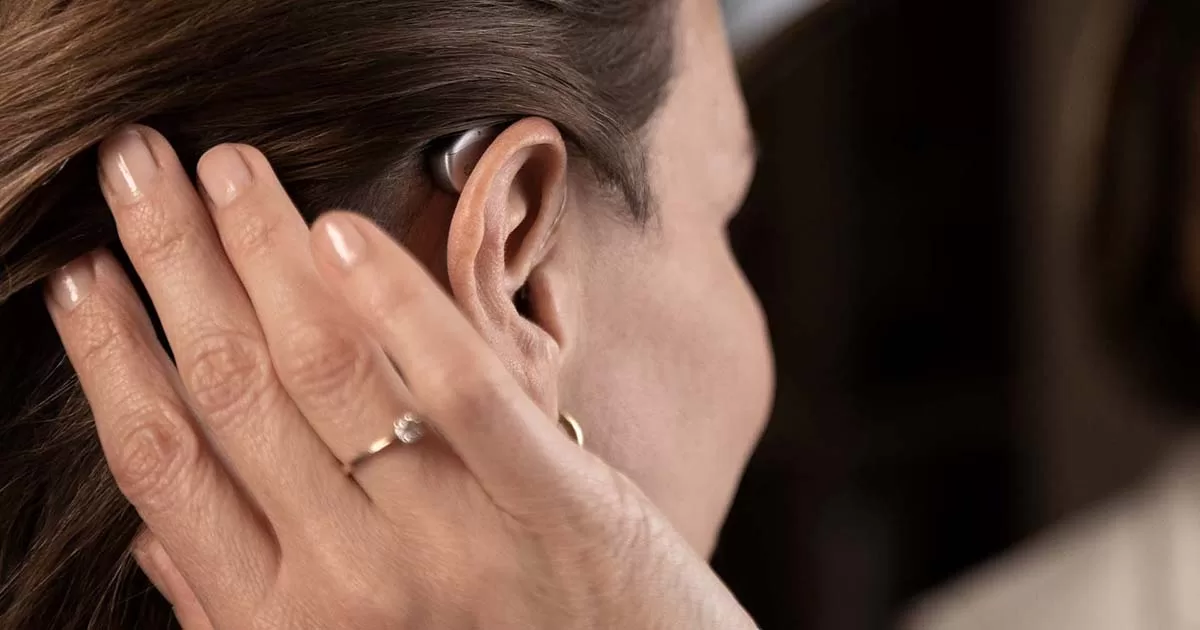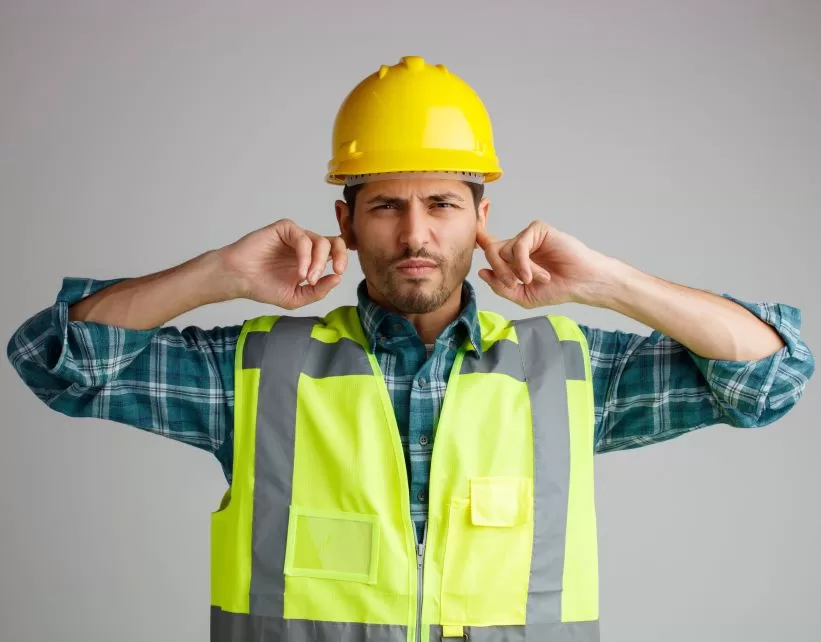Content Navigation
Why hearing aids whistle
If you wear hearing aids or know someone who does then you may have heard an occasional high-pitched whistle, known as feedback. This issue arises from sound spilling out of the ear and looping back into the hearing aids microphone, creating a feedback loop. Modern Bluetooth hearing aids, while offering enhanced connectivity, can exacerbate this issue due to their complex electronic systems. Regular maintenance, proper fitting, and adjusting volume levels can mitigate the risk of feedback. Understanding these factors can help users optimise their experience, ensuring their Bluetooth hearing aids deliver clear and uninterrupted sound.
Common reasons of whistling hearing aids
There are a number of various factors that can contribute to your hearing aids feeding back. Below we will discuss some of the most common reasons for hearing aid feedback and explain what you can do to help reduce your chances of it occurring.
-
Earwax build-up
Build up of ear wax in the ear canal is a common cause of feedback in hearing aids. When ear wax builds up it can block the ear canal causing sound waves to get trapped and bounce back toward the Bluetooth hearing aids microphone. This creates a loop of sound that results in the characteristic whistling noise known as feedback. Regular cleaning of the ear canals and the hearing aid components can prevent this issue. A regular check up and/or professional wax cleaning appointment with your hearing specialist will ensure your ears are clear and hearing aids can function at their optimal level without having to worry about feedback issues.
-
Volume too high
High volume settings on hearing aids can trigger feedback due to the increased sensitivity of the microphone. When the volume is turned up too high, sound waves can escape from the earpiece and loop back into the microphone, creating a feedback loop. This loop amplifies the sound repeatedly, leading to the characteristic whistling noise. Users can prevent this by adjusting the volume to a comfortable level that still allows them to hear clearly without causing feedback. If you don’t have access to volume control with your hearing aids then you will need to seek assistance from your hearing care professional to adjust the settings.
-
Poor-fitting domes
Poorly fitting domes in hearing aids can contribute to feedback issues by allowing sound leakage. When the domes don’t seal properly in the ear canal, sound waves can escape and re-enter the microphone, creating a feedback loop. This results in the characteristic whistling noise. Ensuring the correct size and type of dome for the individual’s ear shape and size is crucial for preventing feedback. Regular checks and adjustments by a hearing healthcare professional can help ensure a proper fit, minimising sound leakage and optimising the performance of the hearing aids.
-
Broken or misaligned components
Broken or misaligned components within a hearing aid can lead to feedback issues by disrupting the normal functioning of the device. When components such as the microphone, amplifier, or receiver become damaged or shift out of place, they may not work as intended, potentially causing sound leakage or distortion. This can result in feedback as sound waves escape and re-enter the microphone, creating a loop of amplified noise. Regular maintenance and prompt repairs by a qualified technician are essential for ensuring all components are functioning correctly, minimising the risk of feedback in hearing aids.
-
Foreign object
Foreign objects in the ear canal can induce feedback in hearing aids by disrupting the normal sound transmission process. Objects such as earplugs, cotton swabs, or even small debris can obstruct the passage of sound waves, causing them to bounce back toward the microphone. This creates a feedback loop, amplifying the noise and producing the characteristic whistling sound. Regular inspection and cleaning of the ear canal, as well as avoiding inserting foreign objects, are crucial for preventing such issues and ensuring optimal performance of the hearing aids.
-
Broken tubing
A broken tube in a hearing aid can induce feedback by disrupting the sound transmission pathway. When the tube connecting the microphone to the receiver is damaged or cracked, sound waves can escape before reaching the receiver, leading to a loss of signal integrity. This loss can trigger the device to amplify its own output, resulting in a feedback loop and the characteristic whistling noise. Regular inspection of tubing and prompt replacement of damaged parts are essential for maintaining the integrity of the sound transmission system and minimising feedback issues in hearing aids.
What are the different types of feedback in hearing aids?
Feedback in hearing aids manifests in three main forms: acoustical, mechanical, and electronic. Acoustical feedback occurs when sound leaks from the ear canal back into the microphone, creating a loop of amplified noise. Mechanical feedback arises from physical factors like poorly fitted domes or damaged tubing on your hearing aid. Electronic feedback occurs due to issues within the Bluetooth hearing aids circuitry, such as signal processing errors or component malfunctions, leading to unintended amplification. Understanding these feedback types help your hearing care specialist diagnose and address issues effectively, ensuring optimal performance and user satisfaction with hearing aids.
-
Acoustical feedback
Acoustical feedback in hearing aids results from sound leakage, typically from the ear canal back into the microphone. This creates a loop of amplified noise, leading to a whistling sound. Common causes include improperly fitted earpieces or excessive volume levels. Regular cleaning and maintenance, along with proper fitting by a qualified professional, can mitigate acoustical feedback issues. Understanding and addressing acoustical feedback is essential for optimising the performance and user experience of hearing aids.
-
Mechanical feedback
Mechanical feedback in hearing aids occurs when physical components malfunction or are improperly fitted, leading to sound leakage. Common issues include broken tubing, loose fittings, or damaged domes. These problems allow sound to escape and re-enter the microphone, resulting in a feedback loop and the characteristic whistling noise. Regular inspection and maintenance of hearing aid components are essential for preventing mechanical feedback and ensuring optimal performance for users.
-
Electronic feedback
Electrical feedback in hearing aids arises from issues within the device’s electronic circuitry. Signal processing errors or component malfunctions can cause unintended amplification, leading to feedback. This can manifest as a whistling noise or distortion in the sound output. Regular monitoring of the device’s performance and prompt servicing by a qualified technician are crucial for addressing electrical feedback and maintaining the functionality of the hearing aid.













